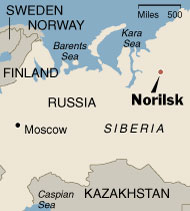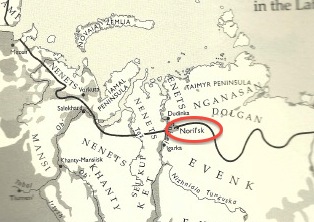Walk into any Starbucks across the country, and you will encounter a highly educated college graduate whose degree in interpretative dance, Zulu, or what-have-you seems to translate into immediate hiring at any coffee shop, effective immediately after graduation. Unfortunately for millions of college students, a bachelors degree no longer guarantees a high paying position. Instead, highly intelligent graduates are stuck working multiple jobs as baristas and busboys in a never-ending race to pay back insurmountable student loans. It is not enough to simply graduate with a degree; instead, students need to be able to think, to question, to innovate, and do so better and more uniquely than any of their similarly educated peers. In other words, an impossible task. A critic of the current higher education system, William Deresiewicz, laments recent graduates’ inability to connect with the common man, and failure to gain a comprehensive understanding of the world. He claims students know “more and more about less and less,” decreasing their employability. ((Deresiewicz, William in “Habits of Mind: Why college students who do serious historical research become independent, analytical thinkers.” The American Scholar Winter 2015.)) However, the authors of “Habits of Mind,” Anthony Grafton and James Grossman, suggest students should be highly specialized, in order to switch from a “passive observer” to a “creator” and to become an independent, self-reliant thinker ((Grafton, Anthony and James Grossman. “Habits of Mind: Why college students who do serious historical research become independent, analytical thinkers.” The American Scholar Winter 2015.)). But liberal arts schools combine both views. Students are well-rounded and well-informed, while still specializing in an area that teaches them the skills that Grafton and Grossman revere; they possess the ability to hold conversations with plumbers and with highly educated colleagues in multiple languages. Grafton and Grossman seem to suggest that it is impossible to be both synoptic and analytic; however, every student that walks down the steps of Old West provide evidence to the contrary.
Tag Archives: Dickinson College
Disappearing Culture: Indigenous Tribes in the Noril’sk Region of Siberia
Early in the Soviet era, the government paid little attention to the indigenous tribes of Siberia and did not take into account whether their policies for modernization would have a negative effect on the native peoples. Collectivization and the push for industrialization directly affected the tribes’ economic activity, traditional lifestyle, and the environment in which they lived. Industrialization took place across the Soviet Union, however I have chosen to focus on the city of Noril’sk, located in Krasnoyarsk Krai in northern Siberia, between the Yenisei River and the Taimyr Peninsula. Four main indigenous groups converge in the area of Noril’sk; these groups are the Dolgan, the Nenets, the Nganasan, and the Evenk people. As a result of Soviet collectivization and industrialization policies of the mid-twentieth century, the traditional culture of these indigenous groups altered or faded considerably.
Here is a map showing the geographical location of Noril’sk:

Source: www.thenytimes.com
A key component of analyzing these policies and their effects on these four tribes is to consider the sustainability of these policies with regards to both the environment and the tribes’ traditional ways of life. I would like to clarify that I am defining sustainability as “long-term cultural, economic and environmental health and vitality….together with the importance of linking our social, financial and environmental well-being.” This definition comes from the organization Sustainable Seattle.[1] I argue that Soviet policy towards the indigenous tribes of Siberia in the twentieth century did not promote long-term cultural, economic or environmental vitality, and were therefore unsustainable and unsupportive for the indigenous clans of the region.
Below is a map showing the location of Evenk, Dolgan, Nenet and Nganasan territory relative to Noril’sk and to each other:
The map above shows that Noril’sk serves as a sort of epicenter for these four groups: the Dolgans, Nenets, Nganasans, and Evenks. To learn more about a specific group please click the hyperlinks for further reading. Not only are these four clans close in proximity, but also—like many Siberian tribes—each clan has historically depended on reindeer hunting or herding for their economic livelihood. This does not mean these groups are all the same; they descend from different Eurasian or East Asian ethnic groups and each speak their own native language, among other differences. That being said, each clan experienced similar difficulties adjusting their traditional lifestyles during collectivization and industrialization. There are many ways in which the Soviet Union altered the lives of tribal people in Siberia; collectivization and industrialization are simply the two policies I have chosen to analyze.
Paper Proposal
For my final paper, I will be writing about the Dickinson Health Center, how it began, and how it has evolved into what it is today. It began in 1944 as the “Fink House”, which was purchased as a residence and turned into an infirmary.The Health center was unofficially named the Fink House after the long time director Oneta Fink. A few years later, the house was split into two sections, one for faculty residences, and the other as the infirmary. It was then moved into Drayer Hall, which at the time was an all women’s dormitory. It was stocked and able to respond to any students need, to include flu outbreaks which had broken out. As time progressed and the college continued to develop, I was very curious as to how the birth control and contraception were viewed, used, and distributed by the college to their students. Officially, in 1987 condoms were given out free of charge to both male and female students. In 2009, an article was published in the school paper, The Dickinsonian, which discussed the other types of contraceptives that would be available for students in the Health Center. In my opinion, this topic is very important and interesting to discuss because the Health Center is a place where students can go and discuss anything pertinent without their parents ever having knowledge if the student chooses. Students are actually required to sign a form to allow the Health Center to share information with parents. To see the progression and the development of the Health Center and the easy accessibility for students to get medicines, among other types of care, can make life much easier for college students.
Carlisle and Dickinson
Podcast about the Dickinson and Carlisle community, discussing the lack of activities and suggesting ways for people to come together in more mature ways than what they are at this moment.

